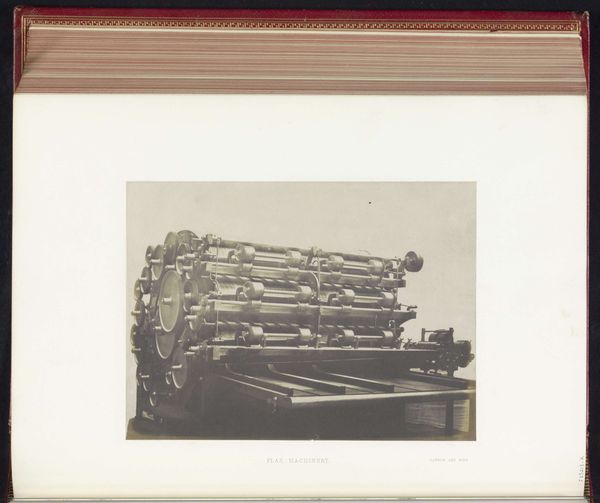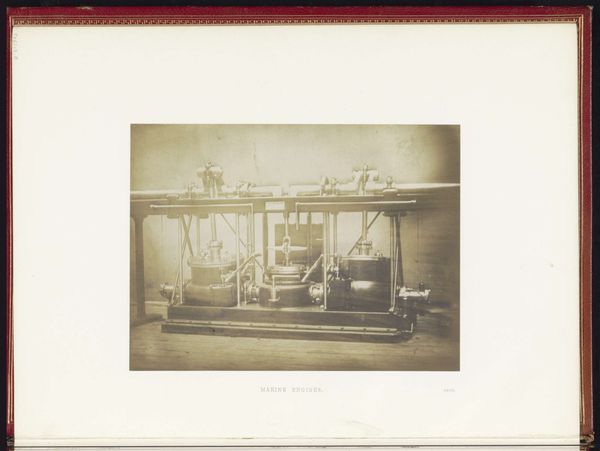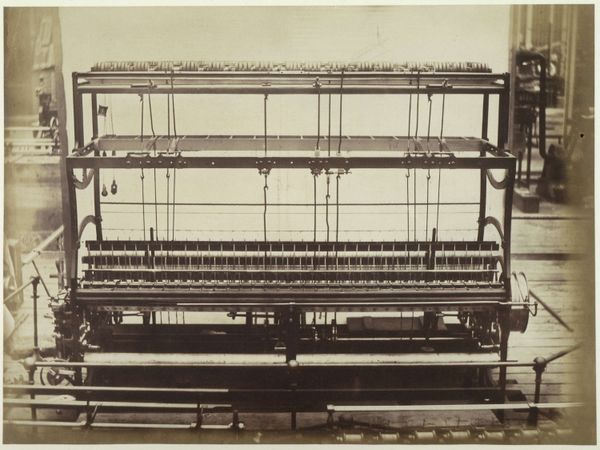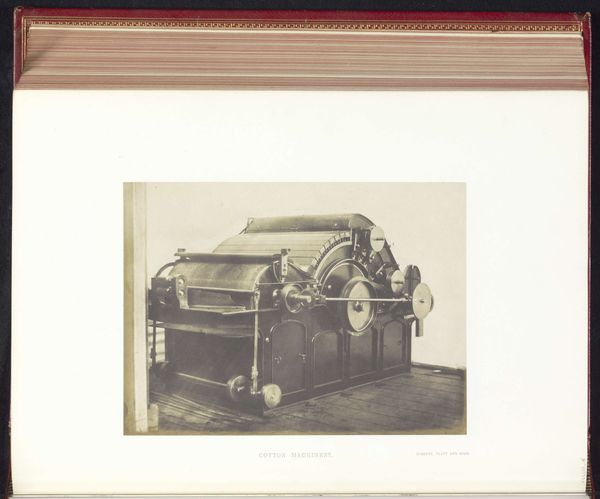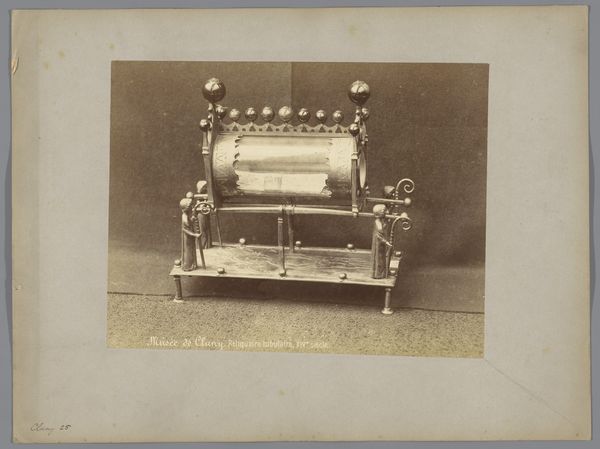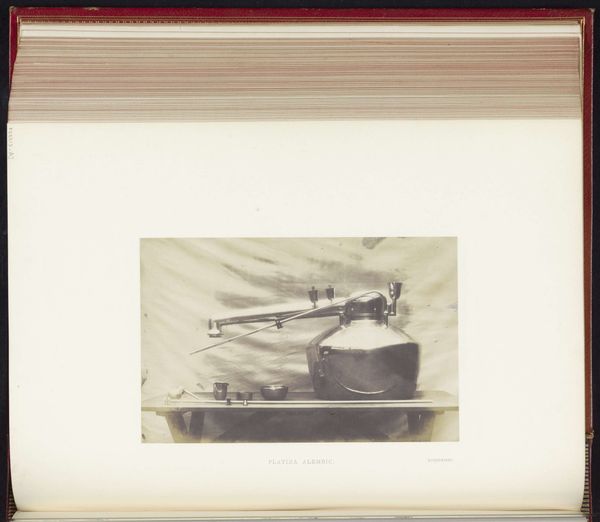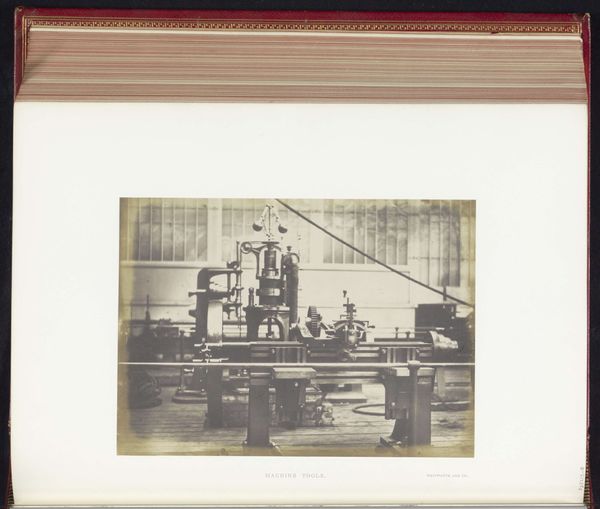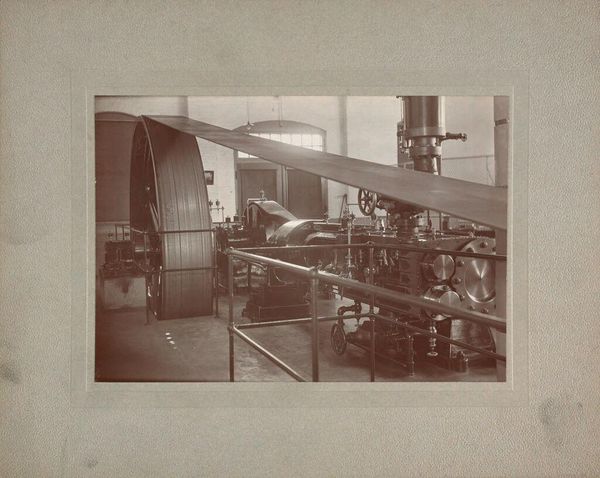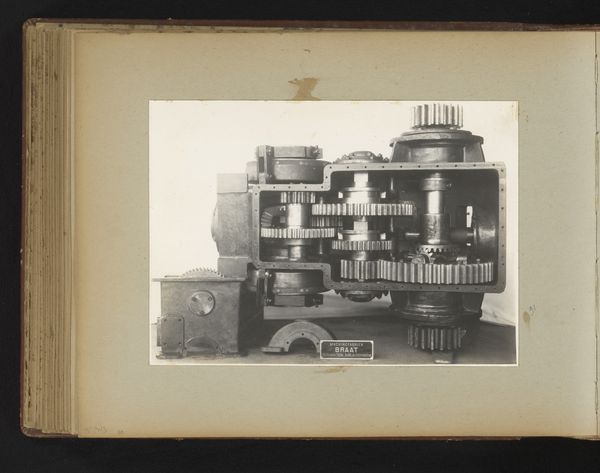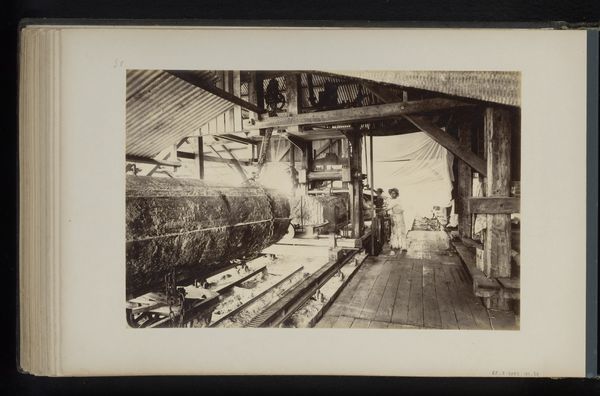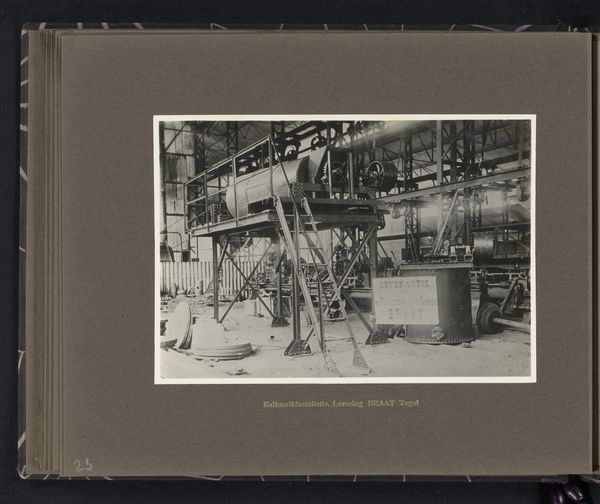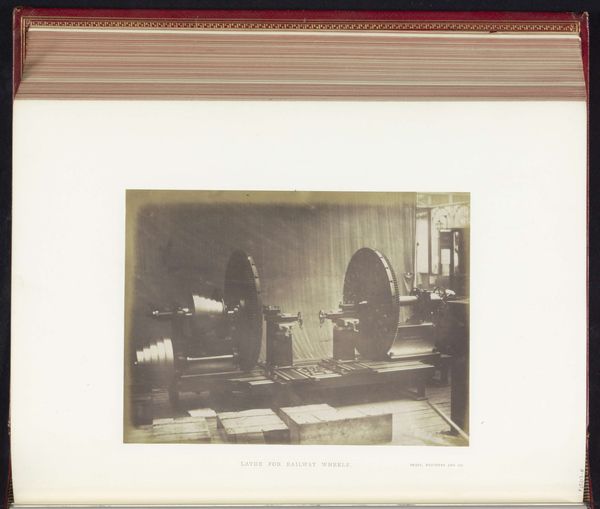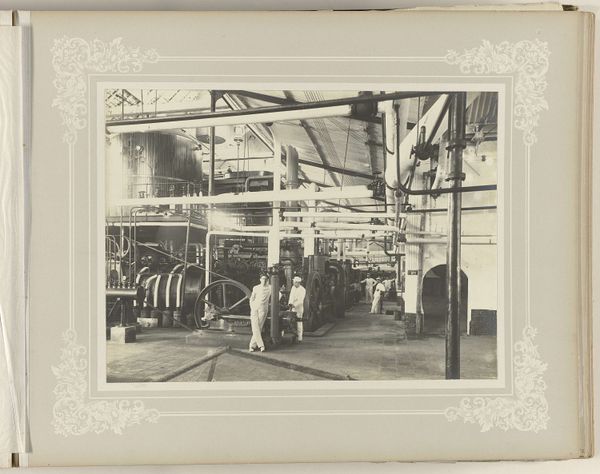
Katoenmachine van Hibbert, Platt and Sons op de Great Exhibition of the Works of Industry of All Nations van 1851 in het Crystal Palace in Londen 1851
0:00
0:00
print, photography
#
photo of handprinted image
#
still-life-photography
# print
#
photography
#
coloured pencil
#
realism
Dimensions: height 154 mm, width 207 mm
Copyright: Rijks Museum: Open Domain
Curator: This photographic print from 1851 documents "The Cotton Machine of Hibbert, Platt and Sons," an exhibit featured at the Great Exhibition held in London's Crystal Palace. Editor: There’s a strange beauty to this scene. The subdued lighting and repeating geometry give it a very melancholic air. Almost like a mechanical still life. Curator: Precisely. Beyond its formal composition, we must acknowledge the cotton machine's integral role in both the industrial revolution and the exploitation of labor. Its presence here celebrates technological advancement, while simultaneously obscuring the socio-political ramifications of such innovation. Editor: It is a stark juxtaposition, isn't it? Visually, the repetitive lines and cylinders create a sense of mechanical order, yet that order masks a history of profound human cost and inequality. Look at the linear perspective guiding the eye; the receding machine seems almost endless. Curator: Absolutely, this illusion is strategic. Its grandeur overshadows the systemic inequities. The photograph itself becomes a form of propaganda, aestheticizing an industry deeply rooted in the oppression of enslaved people and later exploited workers. Consider also, who this exhibition was really for: this art served a capitalist vision of progress. Editor: I do see that now; but I must say, if we detach it for a moment...observe the composition and contrast—the machine is carefully balanced with light, and the receding lines all converge on a focal point within the complex interior. Even now, I notice subtle differences, each rod and cylinder showing how materials translate to light, shadow, texture. Curator: While those intrinsic qualities hold value, we cannot overlook the complex interplay of historical, social, and economic forces which shaped the environment that enabled this artwork's existence. The legacy of industrialization depicted carries a profound moral weight. Editor: It is a lot to absorb. I think the art asks the audience to really unpack the meanings and ideologies underpinning Britain's imperial past, and it makes me appreciate this photograph and what it represents even more now. Curator: Indeed. It’s a visual document and also a critical entry point into examining broader historical and societal inequities, which helps to contextualize discussions about industry.
Comments
No comments
Be the first to comment and join the conversation on the ultimate creative platform.
